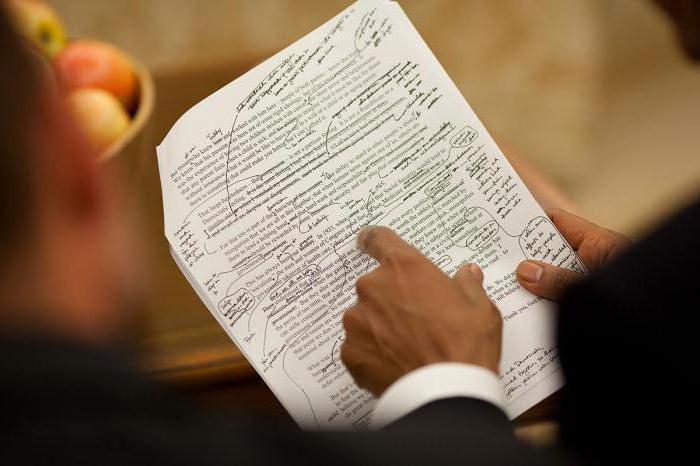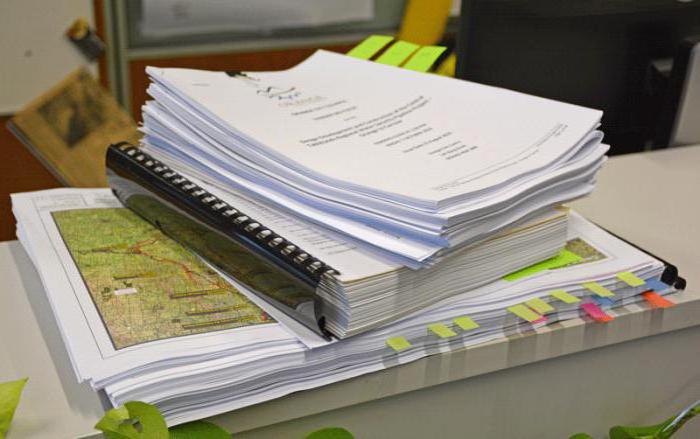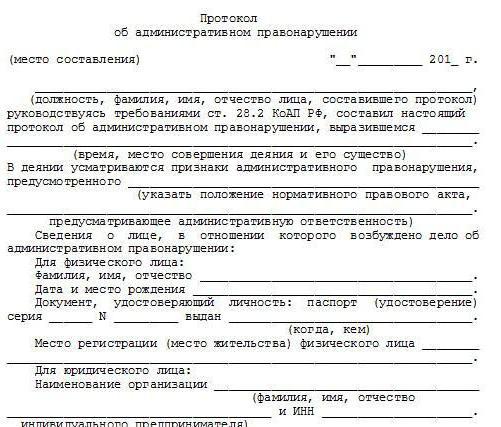Drawing up a protocol on an administrative offense is the main action that is assigned to the official who revealed the relevant fact. The law lists a number of mandatory requirements for the document.
Normative regulation
The compilation of an administrative violation protocol is regulated by the Code of Administrative Offenses. In addition to him, the country has a number of acts affecting administrative proceedings. And only the Code of Administrative Offenses describes the procedures for holding accountable, in particular, the preparation of the protocol. All other laws adopted at the federal or regional level may not contradict the code. In particular, the provisions on the timing of the preparation of the protocol on an administrative offense.

The protocol is not the only document in the case, but it occupies a central place in it. It is his presence that serves as a guide for the judge or the body considering the case in what to do.
The definition of what the protocol is is not given by law. The main article devoted to him is 28.2 of the Code of Administrative Offenses.
The protocol form is approved by bodies related to administrative practice. It is impossible to say that the developed forms of departments are seriously different from each other.
The Decision of the Plenum of 2005 No. 5 is also of significance; its explanations have been issued to help the courts and citizens asserting their rights.
Judicial practice prevailing in a specific region affects the approach to cases.
What is a protocol?
Drawing up a protocol on an administrative offense - writing a document by an authorized official. It describes the offense committed in the opinion of an official by a citizen.
How is it formed? The responsible person (policeman or official) is obliged to describe everything according to the points of the law, otherwise the protocol will be declared unfit in court, and the case will cease. If a citizen shows ingenuity and knowledge, and also does not refuse complaints to the prosecutor's office or other higher bodies, depending on the area in which the case is being considered, then the materials have a chance not to reach the court or the authority making the decision on the protocol.
Information entered in the protocol
In the protocol forms, the filling lines are signed, and the employee knows how to fill them. The procedure for compiling a protocol on an administrative offense provides for the following points:
- date and place of compilation;
- position (title), surname and initials of the employee or official;
- passport data of the person involved (last name, first name, middle name);
- registration data about the company or organization that is involved;
- last names, first names, patronymics of witnesses, their place of residence;
- place and event of the violation; what exactly is it;
- an article of law serving as a basis for prosecution;
- explanations of the person involved;
- inventory of case materials;
- clarification of rights;
- a note on the issuance of a copy of the protocol;
- Signature of the officials who made the protocol;
- signature of the person involved, explanation of the reasons for refusal.
Who is responsible for compiling the materials
The Code of Administrative Offenses describes which authorities and persons have the authority to draw up protocols on administrative offenses.

How, for example, do they act if the offense is recorded by the policeman, and the protocol is compiled by law by a labor inspector or an employee of another specialized organization, depending on which violation is identified? A person who believes that he has found a violation, draws up a report or otherwise sends a message to the competent organization. There, a decision has already been taken to draw up a protocol on an administrative offense.
The proceedings are handled by an authorized person. He is appointed by order of a higher official or superior. Some officials have direct reference in the law, in particular, to senior inspectors of the traffic police and heads of departments of government. So, in the police departments are formed units responsible for administrative practice, mainly they work with traffic violations.
If the documents are drawn up by a person not appointed to the corresponding position, they are considered illegal.
So, if one person began to deal with materials, and continued another, although the documents refer to only one of them, this is also considered a violation. Therefore, it is better not to agree to the proposal to draw up a new document.
Place of compilation and review
Car owners are faced with the fact that they live in one region, and the protocol for them is drawn up in another. Other citizens are faced with similar things, but not so often.
Not having the opportunity to stay in the region of residence, a person has the right to ask to send the case to the review body at his place of residence. Judges and officials almost never refuse a request.

During the time until the materials are handed over, the citizen will be able to prepare, in particular, to find a lawyer who will advise or represent him in court.
We must not forget that the provisions of the law on the place of drawing up the protocol on an administrative offense give only a gain in time. Indeed, for the time of the transfer of the material, the course of the terms of prosecution is suspended.
Some nuances
An event is a list of actions that the violator took. If there is no sufficient description, the corpus delicti is not proven. A copy of the protocol is additionally certified by the official, his signature, otherwise it is considered invalid.
The attracted person has the right not to give explanations regarding himself and his close ones, in addition, to state his comments on a separate sheet of paper. It is imperative that a note is made in the minutes on individual entries. And fully describe all the violations that, in his opinion, took place. Then substitute your signature and date. The lawyers advise to cross out the free space from the notes with the letter Z so that unscrupulous officials do not enter their text.
Complaint
The duties of the prosecutor's office include providing oversight of the activities of authorities, in particular the police and other control bodies. When compiling a protocol on an administrative offense, a complaint to the prosecutor's office about violations of the Code of Administrative Offenses should be filed as soon as possible before the protocol with the materials is submitted to the commission or court. This institution will be forced to respond.
If there is no answer from him, then after receiving a subpoena or a meeting of the commission, all his objections must also be sent to them, at the same time reporting a complaint to the prosecutor, to which there was no answer.

Filing a complaint to the police chief or other official who may influence the case is done only in writing. Oral statements that are not recorded anywhere will bring no result.
How is the procedure performed
The procedure for compiling a protocol on an administrative offense obliges authorized persons to act immediately. Its writing by the law is noted as one of the moments of the beginning of the proceedings.
As a reason, the code indicates the statements of citizens and organizations, the identification of violations by other bodies, officials, messages received, in particular, from the media. Not so long ago, shooting from cameras along the roads was added to the list.
In most cases, documents are prepared at the scene of the incident, otherwise the protocol must be sent to the perpetrator by mail.
Are officials limited in time
What does the law say about the timeframe for compiling an administrative offense report? 3 options are given:
- immediately;
- no later than 2 days;
- after the completion of the administrative investigation.
The first option is typical for motorists, other categories of citizens whose actions do not need a lengthy documentation process. For example, there is no need to conduct an examination, property valuation, or other actions.
Drafting may be postponed for two days to find out some details or information that matters.

An investigation is carried out if the law says so. It is conducted by an official preparing documents for a commission or court.
He is also responsible for sending a notice on the compilation of a protocol on an administrative offense.
Events are held within a two-month period of time from the date of identification or commission, including proceedings on a commission. For cases where the decision is made by the court, 3 months are given.
Going beyond the statute of limitations makes the compilation of materials pointless, and the case ends automatically. In practice, termination is already documented in commissions or courts.
Compilation errors
The specified list of items in Art. 28.2 of the Code of Administrative Offenses is mandatory; inaccuracies or violations in relation to them lead to the recognition of the protocol as unacceptable evidence.
For example, a document was drawn up without the presence of the guilty person and there is no reliable information on the explanation of rights and obligations to him. Such things are considered a significant violation of the rights of a citizen.

When officials draw up a protocol on an administrative offense, corrections are certified by their own signatures.
As stated above, a citizen has the right to make comments, setting them out separately.
All errors that are not considered significant, do not impede the further course of business.
For example, spelling errors, with the exception of spelling the surname and name of the person. Similarly, judicial practice evaluates the use of the initials of citizens, and not their full name and patronymic.
Is a protocol always drawn up
The compilation of the protocol in the case of an administrative offense is mandatory with the exception of situations if:
- violation does not carry a great danger;
- a warning or a fine is issued, and the citizen agrees with him;
- the case shall be immediately adjudicated.
If the person involved does not agree with the claims, a protocol is drawn up and a case is formed in a general manner.
Conclusion
The protocol is the main document in the case, not counting the exceptions expressly indicated in the law, and how it is drawn up affects the outcome of the case. The active participation of a citizen - his refusal to agree to illegal actions, the use of legal rights, will force officials or police officers to step back or increase the chances of winning a court. Relying only on their goodwill or advice, in particular, the traffic police, is not worth it.

Victory in a number of cases can be achieved only in the Supreme Court of the country, having passed all instances.